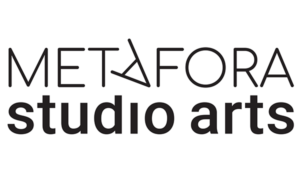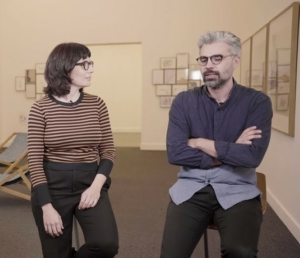Curatorial Project Workshop by Beatriz Escudero and Francesco Giaveri
The topic “artist as curator” has only recently started being extensively studied. We are far from getting a complete picture of all its transcendence for contemporary art and curating itself. Of course, the first curator was an artist. And very probably, the best curators are artists too.
As Elena Filipovic mentioned in her anthology dedicated to this subject, there are many key aspects of contemporary art practices that artist curated exhibitions point out: “questions regarding the limits of the artwork (Where does an artwork end and its context begin?), the status of the exhibition (Should an exhibition curated by an artist be considered an artwork? How is it to be evaluated in relation to an artist’s oeuvre?)” (Filipovic, 2017: 13).
—
References: “The Artist As Curator. An Anthology”, Edited by Elena Filipovic, Mousse Publishing / Koening Books, 2017 and “Contemporary Cultures of Display”, Edited by Emma Barker, Yale University Press, 1999
Written by Beatriz Escudero and Francesco Giaveri
Our main concern about this workshop was to propose artists to develop an exercise of curating, including or not their works into an exhibition project, in order to think about their own practice from a different angle. That is why we have conceived a workshop both theoretical and practical. Together with an introduction and different materials to focus on exhibitions curated by artists, from Gustave Courbet to Danh Vo, we have analyzed some relevant concepts such as value, the gatekeepers of the international artistic system, the curator’s function, private and public sector, museums and galleries. During the tutorial sessions we offered tools to develop an exhibition display, from traditional to cutting edge solutions. In the workshop we have tried to work together focusing on the translation of concepts and narratives into exhibition space as well as state that there is no neutral or transparent space: each and every one embodies multiple meanings and nuances that affect the interpretation of the artworks. The display is a potential tool to analyze and develop in our exercise as curators and as artists. As Emma Barker points out: “The condition of being on display is fundamental to the construction of the category ‘art’ in the modern western world. Art’s autonomy – its definition as a specialized set of objects and practices set apart from the more mundane concerns of the society – is bound up with the existence of the museum, which, in displaying works of art, stops them being used for any purpose other than that of being look at” (Barker, 1999: 13).
The exercise that every group of students has developed consists in a presentation of a curated show that they should defend in front of the class. This exercise has been followed up by the professor through individual meetings: from deciding the title and list of artists, choosing the appropriate venue for their exhibition, to designing the floor-plan and all the key elements involved in the display. This methodology helped the students to understand how to present their works and think about the exhibition space as a complex environment with its codes and rhetoric. The practice and the concept of mediation was also very present and discussed during these sessions.
The last step consisted in a simulation of a communication strategy for their specific project. We find that this last part is a key point in order to make sense for all the previous efforts. At the end an exhibition is a way to deliver a content, a message, to an audience. For artists it is very important to find the right voice to communicate their artistic practices too, and this means dealing with different situations and a wide range of different audiences. Specification, specialization, engaging communities, working on small scale projects that can involve other agents from the local context, as well as understanding that we are part of the global environment, thinking glocal is crucial when working within artistic practices. And it’s for sure the most urgent challenge that we are all facing.
About the authors
Beatriz Escudero has a degree in History of Art from the University of Barcelona, a diploma in Cultural Management and a Master’s degree in Direction and Design of Exhibition Space from the Pompeu Fabra University in Barcelona, and Independent Studies Programme Master’s degree in Advanced Museum Studies, Theory and Art Criticism from the Autonomous University of Barcelona (UAB). She has curated exhibitions at the Bienal de Cuenca (2019), Trastero 109 (2019), the Addaya Centre d’Art Contemporani (2017), Sant Andreu Contemporani (2016), La Casa Encendida (2015) and Fundació Antoni Tàpies – Sala d’Art Jove of the Generalitat de Catalunya (2013). She is also the co-founder of www.site-specificconversation.com, an online project that holds conversations with artists in their workplace.
Francesco Giaveri trained in Conservation of Cultural Heritage at Venice’s Università Ca’ Foscari and in History of Art at the Universidad Complutense of Madrid, where he obtained the DEA in Contemporary Art. He has been a lecturer at the Universidad Antonio de Nebrija (2016-2018), director of the gallery L21 Madrid (2013-2016) and, since 2016, gallery manager of ADN.
He has curated exhibitions in Piramidón (2020), Centro de Arte Alcobendas (2018), Baril (2017), ADN Platform (2019 and 2017), Salón (2016-17), Sala de Arte Joven of the Madrid Regional Government (2014), Espacio Trapezio (2013), Espacio F (2012) and Galería Marta Cervera (2011).
Francesco and Beatriz have worked together since 2017, organising exhibitions in Madrid’s Institut Français (2020), Barcelona’s Museu del Disseny (2019), the Galleria Macca (2018) and the Galería JosédelaFuente (2018). They regularly contribute to various forms of media, writing about exhibitions and the history of galleries.


